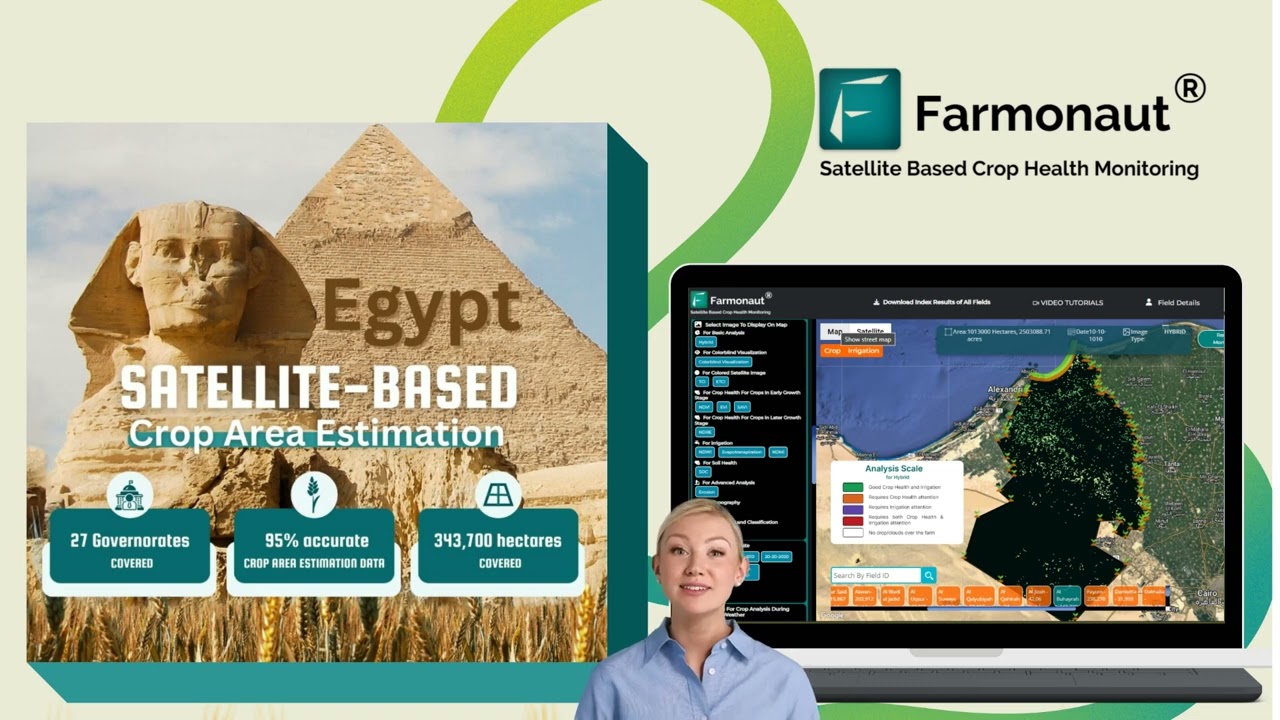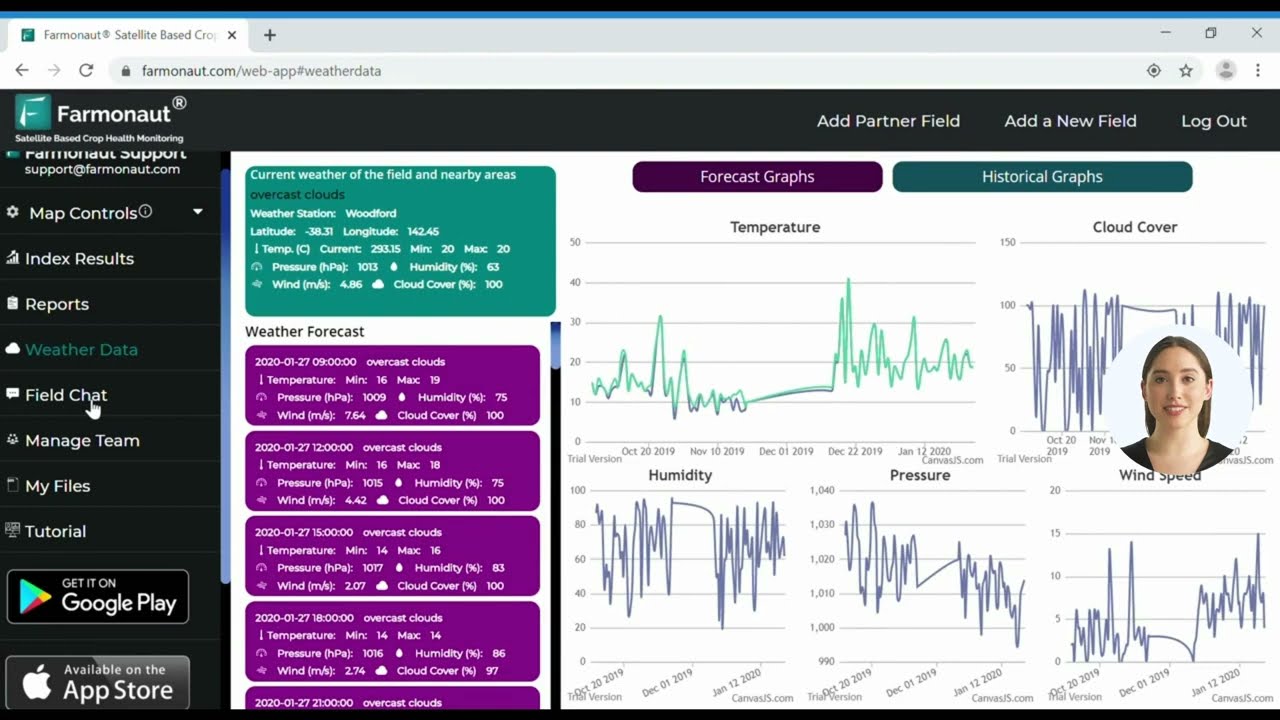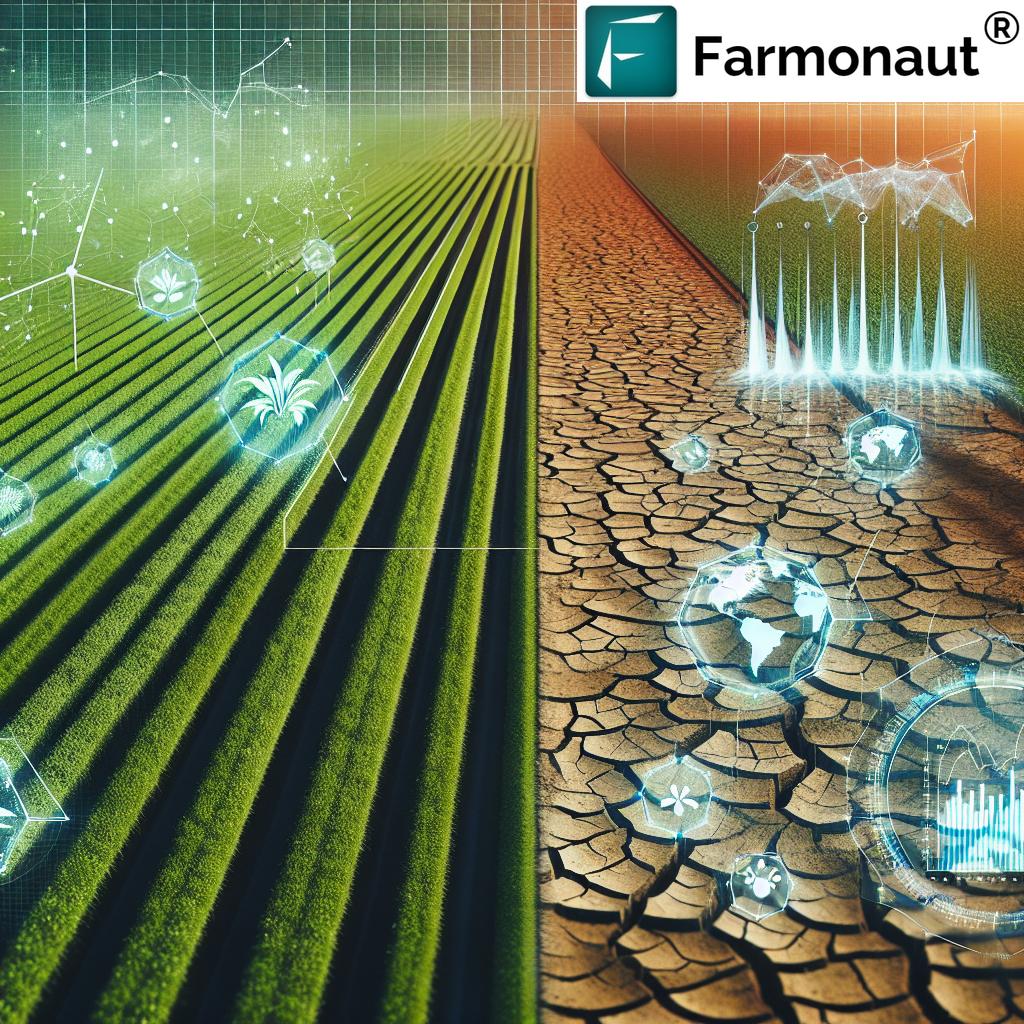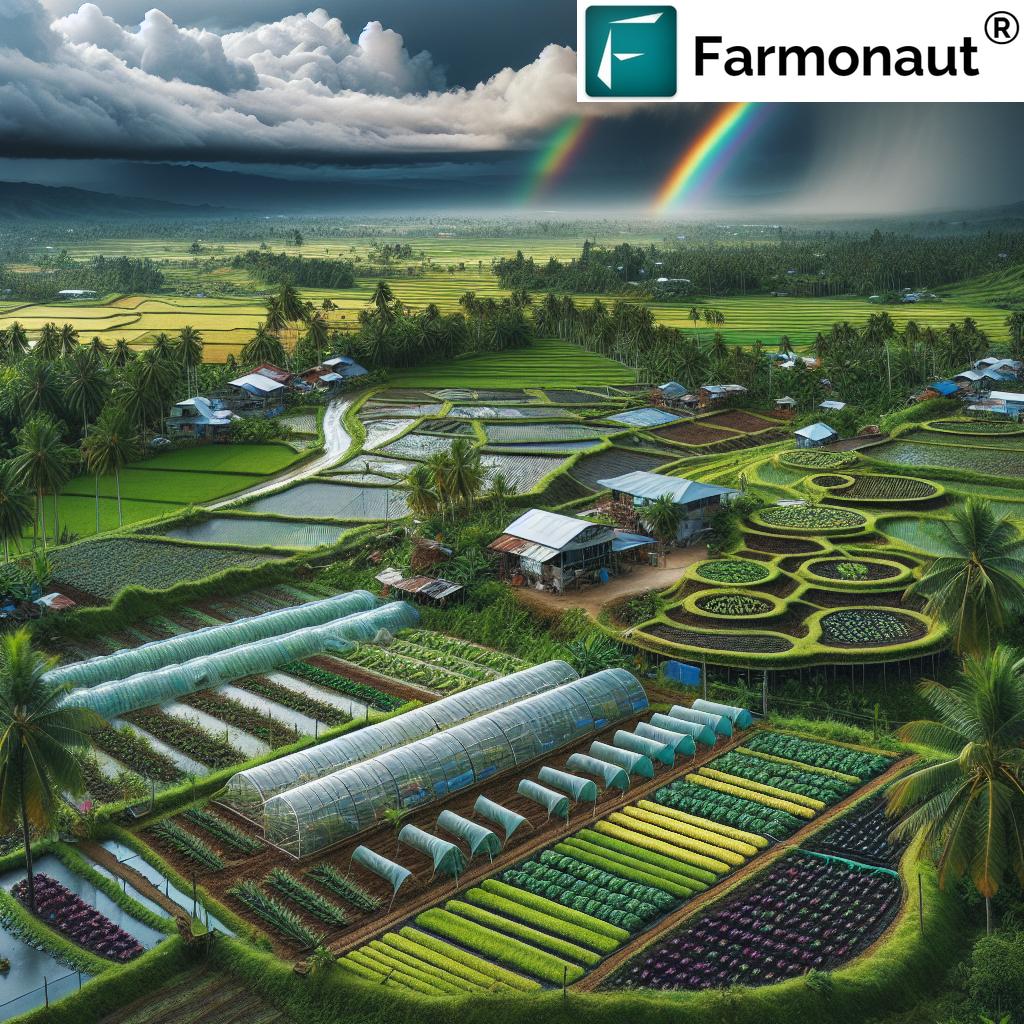Boosting India’s Spice Industry: Expert Guide to Sustainable Cardamom Cultivation and Export Trends
“India’s cardamom production contributes significantly to the global spice market, with exports reaching over 5,000 metric tons annually.”
Welcome to our comprehensive guide on India’s thriving spice industry, with a special focus on cardamom cultivation and export trends. As leaders in agricultural technology, we at Farmonaut are excited to share our expertise and insights into this dynamic sector. In this blog post, we’ll explore the latest spice cultivation techniques, cardamom production in India, and the growing trend of organic spice farming.
India has long been known as the “Spice Bowl of the World,” and for good reason. Our rich agricultural heritage, combined with modern farming practices, has positioned us at the forefront of the global spice trade. Today, we’ll delve into the intricacies of sustainable cardamom cultivation, post-harvest management, and the exciting export opportunities that lie ahead.

The Rise of Cardamom in India’s Spice Industry
Cardamom, often referred to as the “Queen of Spices,” has been a cornerstone of Indian agriculture for centuries. Its aromatic pods are not only a culinary delight but also a significant contributor to our export economy. Let’s explore why cardamom holds such a prestigious position in our spice portfolio:
- Versatility in culinary applications
- High demand in international markets
- Medicinal properties and health benefits
- Sustainable cultivation practices
As we dive deeper into cardamom production, it’s essential to understand the role of technology in modern spice farming. At Farmonaut, we leverage satellite-based crop health monitoring to assist farmers in optimizing their yields. Our  provides real-time insights into vegetation health, soil moisture levels, and other critical metrics that are crucial for successful cardamom cultivation.
provides real-time insights into vegetation health, soil moisture levels, and other critical metrics that are crucial for successful cardamom cultivation.
Sustainable Spice Cultivation Techniques
The sustainable spice industry is not just a trend; it’s a necessity for the future of agriculture. We’ve observed a significant shift towards eco-friendly farming practices, particularly in cardamom cultivation. Here are some key techniques that are revolutionizing the industry:
- Integrated Pest Management (IPM): Reducing chemical pesticide use through natural predators and bio-controls.
- Water Conservation: Implementing drip irrigation systems to optimize water usage.
- Soil Health Management: Using organic composting and crop rotation to maintain soil fertility.
- Agroforestry: Integrating cardamom cultivation with tree crops for biodiversity and additional income.
These sustainable practices not only benefit the environment but also contribute to the production of high-quality spices that meet international standards. Our Jeevn AI Advisory System at Farmonaut provides personalized recommendations to farmers, helping them implement these sustainable techniques effectively.
Organic Spice Farming: A Growing Trend
Organic spice farming has seen a remarkable surge in popularity, particularly in the cardamom sector. This shift is driven by several factors:
- Increasing consumer demand for chemical-free products
- Premium pricing for organic spices in international markets
- Government initiatives supporting organic farming
- Enhanced soil health and biodiversity
At Farmonaut, we support organic farmers through our advanced satellite monitoring system. By providing accurate data on crop health and soil conditions, we enable farmers to make informed decisions without relying on synthetic inputs. Our  and
and  offer on-the-go access to this vital information.
offer on-the-go access to this vital information.
Post-Harvest Management for Spices
Effective post-harvest management for spices is crucial to maintain quality and maximize market value. For cardamom, this process involves several critical steps:
- Timely Harvesting: Picking cardamom capsules at the right stage of maturity.
- Cleaning and Sorting: Removing debris and grading capsules based on size and color.
- Drying: Using controlled temperature drying to preserve aroma and flavor.
- Packaging: Utilizing airtight, moisture-proof packaging to maintain freshness.
- Storage: Keeping dried cardamom in cool, dry conditions to prevent quality degradation.
Our blockchain-based traceability solution at Farmonaut plays a vital role in ensuring transparency throughout the post-harvest process. This technology allows buyers to trace the journey of their spices from farm to shelf, building trust and adding value to the product.
“Kerala and Sikkim are two major cardamom-producing states in India, accounting for over 70% of the country’s total production.”
Spice Export Market Trends
The spice export market trends for Indian cardamom and other spices are highly encouraging. We’ve observed several key trends shaping the industry:
- Growing demand for value-added spice products
- Increasing popularity of Indian spices in new international markets
- Rise of e-commerce platforms facilitating direct farmer-to-consumer sales
- Stringent quality control measures to meet global food safety standards
At Farmonaut, we assist exporters by providing data-driven insights into crop quality and yields. Our satellite monitoring technology helps predict harvest times and quantities, enabling better planning for export commitments.

Indian Spice Growing Regions: A Diverse Landscape
India’s geographical diversity contributes to its rich variety of spices. Let’s explore some of the key Indian spice growing regions:
- Kerala: Known as the cardamom capital of India, particularly the Idukki district.
- Sikkim: Produces high-altitude, premium quality large cardamom.
- Karnataka: Significant producer of both small and large cardamom varieties.
- Tamil Nadu: Known for its cardamom plantations in the Western Ghats.
- Andhra Pradesh: Major producer of chili, particularly in the Guntur region.
- Rajasthan: Leading producer of cumin and coriander.
Our satellite-based crop monitoring at Farmonaut provides region-specific insights, helping farmers adapt their cultivation practices to local conditions. This technology is particularly valuable in diverse growing regions, where climate and soil conditions can vary significantly.
Extension Services for Spice Farmers
Extension services for spice farmers play a crucial role in disseminating knowledge and supporting sustainable farming practices. These services include:
- Training programs on advanced cultivation techniques
- Demonstration plots showcasing best practices
- Soil testing and analysis services
- Market linkage assistance
- Access to improved planting materials and technologies
At Farmonaut, we complement these extension services with our AI-powered advisory system. Our platform provides personalized recommendations based on satellite data, weather forecasts, and historical trends, enhancing the effectiveness of traditional extension services.
Scientific Cultivation of Cardamom
The scientific cultivation of cardamom involves a blend of traditional knowledge and modern agricultural science. Key aspects include:
- Site Selection: Choosing locations with suitable altitude, rainfall, and soil conditions.
- Variety Selection: Opting for high-yielding, disease-resistant cultivars.
- Planting Techniques: Implementing proper spacing and shade management.
- Nutrient Management: Applying balanced fertilizers based on soil tests.
- Irrigation: Utilizing efficient irrigation systems like drip or sprinkler.
- Plant Protection: Implementing integrated pest and disease management strategies.
Our satellite-based crop health monitoring at Farmonaut supports scientific cultivation by providing real-time data on vegetation health, enabling farmers to make data-driven decisions throughout the growing season.
Spice Quality Improvement Methods
Spice quality improvement methods are essential for meeting international standards and fetching premium prices. Some key strategies include:
- Implementing Good Agricultural Practices (GAP)
- Enhancing post-harvest handling and processing techniques
- Investing in modern storage facilities
- Adopting quality certification systems (e.g., ISO, HACCP)
- Continuous farmer education and training
Farmonaut’s blockchain-based traceability solution plays a crucial role in quality assurance by providing a transparent record of the spice’s journey from farm to market. This technology helps build trust with buyers and ensures adherence to quality standards throughout the supply chain.
State-wise Spice Production Enhancement
Various Indian states are implementing initiatives to enhance their spice production. Let’s look at some state-specific efforts:
- Kerala: Promoting high-density planting and organic cardamom cultivation.
- Sikkim: Focusing on large cardamom rejuvenation and marketing support.
- Karnataka: Implementing drip irrigation and integrated farming systems.
- Tamil Nadu: Encouraging intercropping and providing subsidies for organic inputs.
- Andhra Pradesh: Developing chili processing clusters and export zones.
Our satellite monitoring technology at Farmonaut supports these state-level initiatives by providing accurate data on crop area estimation, yield prediction, and resource management. This information is invaluable for policymakers and agricultural departments in planning and implementing enhancement programs.
Financial Aspects of Spice Farming
Understanding the financial aspects of spice farming is crucial for sustainable growth. Key considerations include:
- Initial investment costs (land preparation, planting material)
- Operational expenses (fertilizers, pesticides, labor)
- Marketing and transportation costs
- Price fluctuations and market demand
- Access to credit and insurance facilities
At Farmonaut, we assist farmers in financial planning by providing data on crop health and yield estimates. This information helps in making informed decisions on resource allocation and market timing. Our partnership with financial institutions also facilitates easier access to crop loans and insurance through satellite-based verification.
| State | Annual Cardamom Production (tonnes) | Cultivation Area (hectares) | Average Yield (kg/hectare) | Export Volume (tonnes) | Export Value (USD millions) | Primary Export Destinations |
|---|---|---|---|---|---|---|
| Kerala | 15,000 | 40,000 | 375 | 3,500 | 70 | Saudi Arabia, UAE, USA |
| Karnataka | 3,500 | 10,000 | 350 | 800 | 16 | UK, Japan, Germany |
| Tamil Nadu | 2,000 | 6,000 | 333 | 450 | 9 | Malaysia, Singapore, Canada |
| Sikkim | 4,500 | 25,000 | 180 | 1,000 | 25 | Pakistan, Nepal, Bangladesh |
Market-Readiness Techniques for Spice Exporters
Preparing spices for export requires attention to detail and adherence to international standards. Key market-readiness techniques include:
- Quality Control: Implementing rigorous testing and grading systems.
- Packaging: Using appropriate materials to preserve quality during transit.
- Certification: Obtaining relevant food safety and organic certifications.
- Documentation: Ensuring all export paperwork is accurate and complete.
- Market Research: Understanding target market preferences and regulations.
Our blockchain-based traceability solution at Farmonaut supports exporters in demonstrating the authenticity and quality of their products, which is increasingly important in international markets.
The Role of Technology in Spice Industry Growth
Technology is playing an increasingly vital role in the growth and sustainability of the spice industry. At Farmonaut, we’re at the forefront of this technological revolution, offering innovative solutions that address key challenges in spice cultivation and export. Our services include:
- Satellite-based crop health monitoring
- AI-powered advisory systems
- Blockchain-based traceability solutions
- Weather forecasting and climate analysis
- Yield prediction and harvest planning tools
These technologies empower farmers and exporters with data-driven insights, enabling them to make informed decisions and optimize their operations. For more information on how our technology can benefit your spice farming or export business, visit our API Developer Docs.
Conclusion: The Future of India’s Spice Industry
As we’ve explored in this comprehensive guide, India’s spice industry, particularly the cardamom sector, is poised for significant growth and innovation. The combination of traditional knowledge, sustainable practices, and cutting-edge technology is driving the industry forward.
At Farmonaut, we’re committed to supporting this growth by providing advanced agricultural solutions that enhance productivity, sustainability, and market competitiveness. Whether you’re a small-scale farmer or a large exporter, our platform offers tools and insights to help you succeed in the dynamic world of spice cultivation and trade.
For those looking to leverage technology in their spice farming or export operations, we invite you to explore our services. Visit our API page to learn more about integrating our satellite and weather data into your systems.
FAQ Section
Q: What are the main challenges in cardamom cultivation?
A: The main challenges include pest and disease management, maintaining soil fertility, adapting to climate change, and ensuring consistent water supply.
Q: How can technology improve spice farming?
A: Technology like satellite monitoring, AI advisory systems, and blockchain traceability can optimize resource use, improve crop health, and enhance market access for spice farmers.
Q: What are the key factors affecting spice export prices?
A: Factors include global supply and demand, quality of produce, currency exchange rates, and international trade policies.
Q: How can small-scale farmers access international markets?
A: Small-scale farmers can access international markets by forming cooperatives, obtaining necessary certifications, leveraging e-commerce platforms, and partnering with established exporters.
Q: What are the benefits of organic spice farming?
A: Organic spice farming offers premium pricing, improved soil health, reduced environmental impact, and access to niche markets with growing demand for organic products.

















